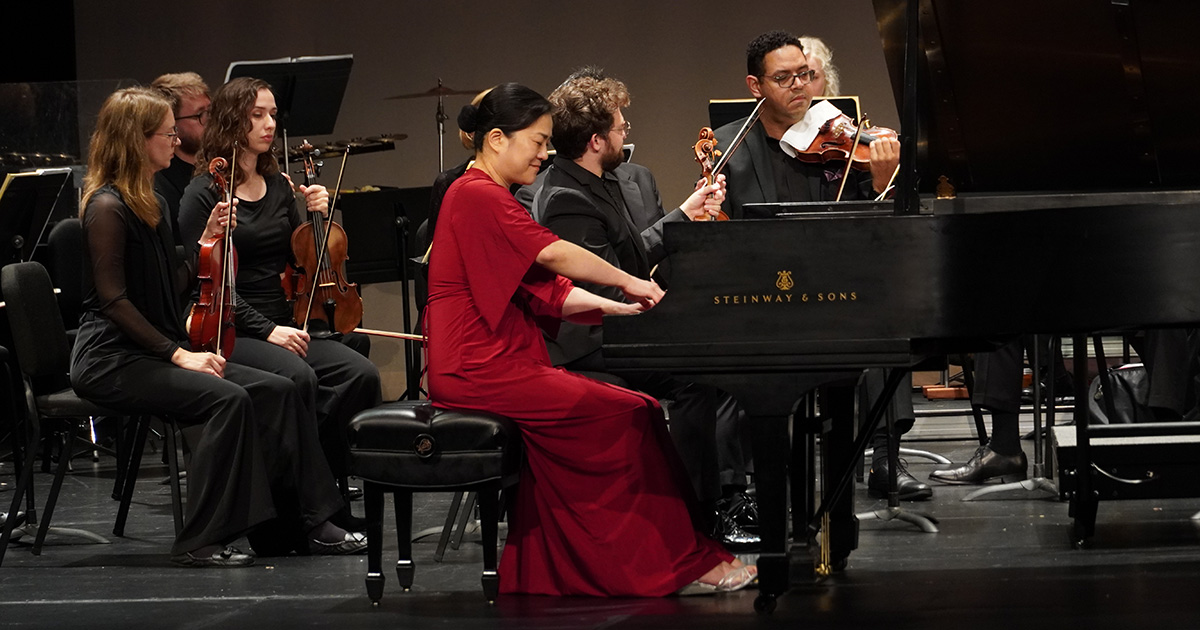As we drift into October, the end of the calendar year looms and the adjective “memorable” finds its way into our consciousness once again as consideration begins to solidify for our yearly list of most memorable classical music performances. As it turns out, this past Sunday afternoon yielded two such concerts that practically defined memorable, one of which was the Knoxville Symphony Orchestra’s season opening concert in their Chamber Classics Series at the Bijou.
That concert actually worked on three separate levels. Maestro Aram Demirjian opened with a KSO-commissioned work enjoying its world premiere performance: Dosia McKay’s atmospheric The Lure of the Flowering Fern. The performance oozed a sense of mystery and “eerie sights and sounds” from percussion and the descriptive yearning of strings, punctuated with suggestive woodwind textures.
One of the joys of the KSO’s Chamber Classics Series is that it draws its soloists from the orchestra itself. Two seasons ago, KSO Principal Keyboardist Emi Kagawa was called on for Mozart’s Piano Concerto No. 27 and was so impressive on that concerto that there was high anticipation for her returning this year to take on Mozart’s Piano Concerto No. 17. As it turned out, her performance was not just compelling, but brilliantly memorable in the satisfying personality she imparted to the work. If one subscribes to the theory that one can judge Mozart concerto performances by the slow Andante movement, this one was world-class; her accuracy sparkled and the pacing of phrases seemed effortless. One could feel the internal joy that Kagawa was drawing with it and from it. In fact, the soloist-conductor-orchestra give and take was as beautifully precise as one could hope for. Not surprising, the final Allegretto was sparkling, fresh, and fun, as if one was hearing this familiar, delightfully fun concerto for the first time.

After offering the audience one of the most entertaining one-minute comparisons of Beethoven’s nine symphonies imaginable, Demirjian focused in on the Beethoven Fourth and devoted the second half of the concert to it—perhaps the perfect follow-up to the Mozart concerto given the significant joy the composer takes in his perky conversations between strings and winds.
Interestingly, despite the characteristic Beethoven ebb and flow of the first Adagio and third Allegro vivace movements, the finale Allegro ma non troppo seems to demand a virtuosic show of force that leaves the listener guessing as to how it will end. Before that end, though, Beethoven calls on the strings and others for a rip-roaring pace, including that infamous and surprising sputtering of notes from the bassoon (KSO Principal Bassoon Ryan Yamashiro). While some might call Beethoven’s ending anticlimactic, and there is that danger, Demirjian and the orchestra were intent on something a little Haydn-esque in its subtle humor. Those needing a real tease of a bang-bang-bang ending can always look to Beethoven’s Third or Fifth—the Fourth fits nicely in between.






